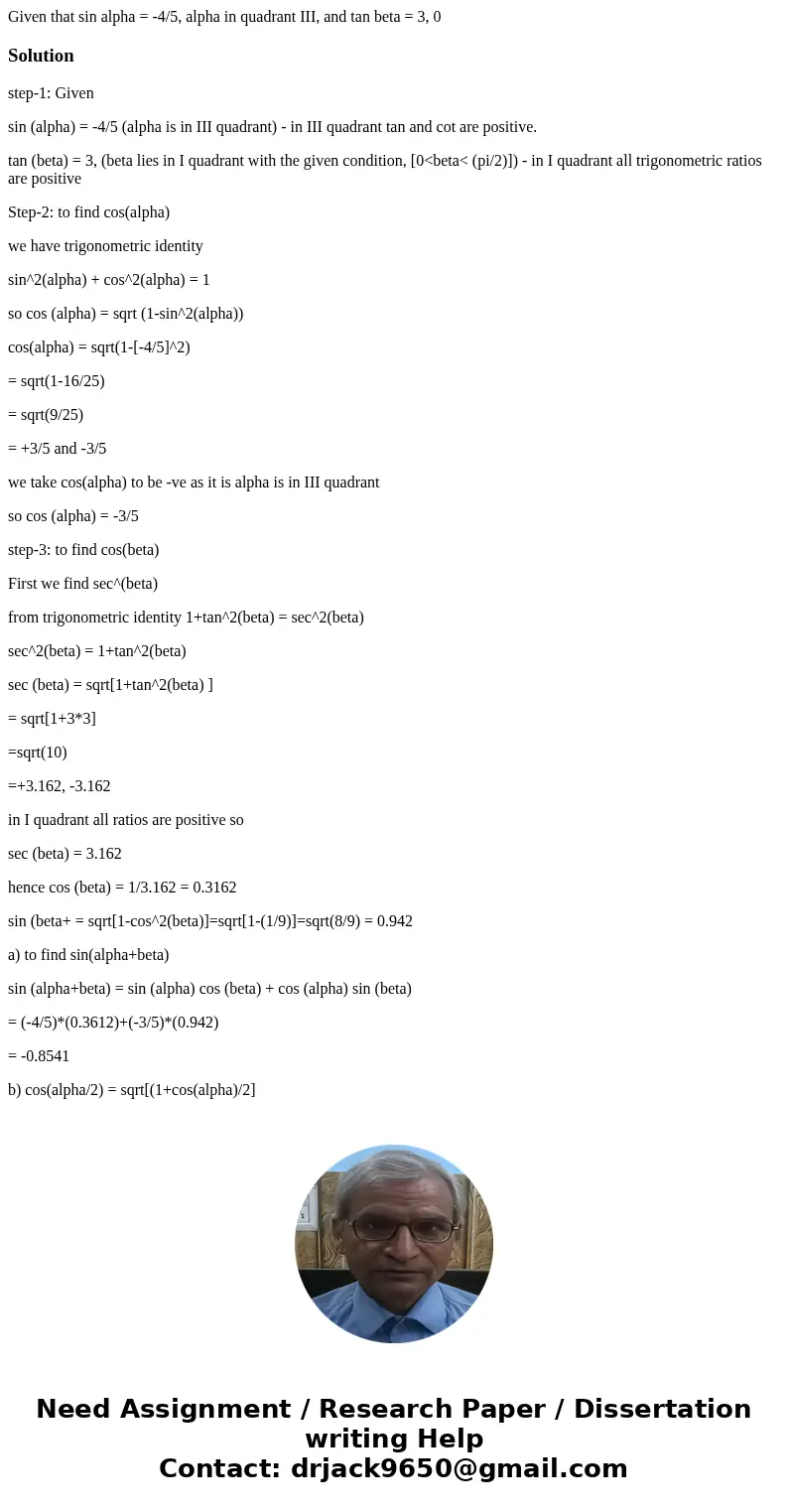Given that sin alpha 45 alpha in quadrant III and tan beta
Solution
step-1: Given
sin (alpha) = -4/5 (alpha is in III quadrant) - in III quadrant tan and cot are positive.
tan (beta) = 3, (beta lies in I quadrant with the given condition, [0<beta< (pi/2)]) - in I quadrant all trigonometric ratios are positive
Step-2: to find cos(alpha)
we have trigonometric identity
sin^2(alpha) + cos^2(alpha) = 1
so cos (alpha) = sqrt (1-sin^2(alpha))
cos(alpha) = sqrt(1-[-4/5]^2)
= sqrt(1-16/25)
= sqrt(9/25)
= +3/5 and -3/5
we take cos(alpha) to be -ve as it is alpha is in III quadrant
so cos (alpha) = -3/5
step-3: to find cos(beta)
First we find sec^(beta)
from trigonometric identity 1+tan^2(beta) = sec^2(beta)
sec^2(beta) = 1+tan^2(beta)
sec (beta) = sqrt[1+tan^2(beta) ]
= sqrt[1+3*3]
=sqrt(10)
=+3.162, -3.162
in I quadrant all ratios are positive so
sec (beta) = 3.162
hence cos (beta) = 1/3.162 = 0.3162
sin (beta+ = sqrt[1-cos^2(beta)]=sqrt[1-(1/9)]=sqrt(8/9) = 0.942
a) to find sin(alpha+beta)
sin (alpha+beta) = sin (alpha) cos (beta) + cos (alpha) sin (beta)
= (-4/5)*(0.3612)+(-3/5)*(0.942)
= -0.8541
b) cos(alpha/2) = sqrt[(1+cos(alpha)/2]
= sqrt [(1+(-3/5))/2]
= sqrt [1/5]
=0.4472


 Homework Sourse
Homework Sourse